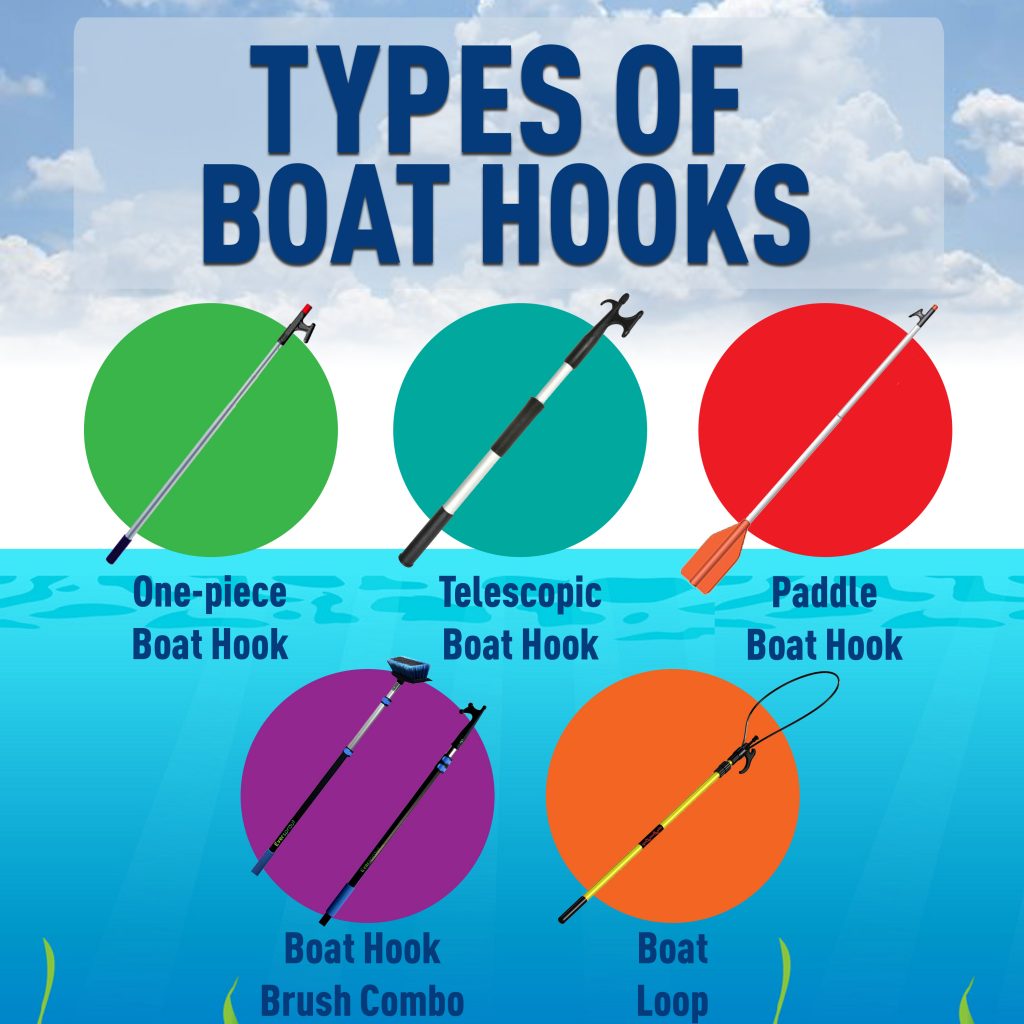Name one boat accessory that has been kind of overlooked of late. If you haven’t figured it out yet, well sadly, there’s little I can say or do except “READ THE ___TITLE AGAIN! Yes! Alright, you got it now. No more yelling on my part. I did enough while gallivanting the seas over the years. Boat hooks are an important tool on every boat. There are so many types, sizes, and materials from which they are manufactured. So, let’s start at the beginning, wherever that is.

Evidence of the first historical use of boat hooks comes from ancient Rome but they probably stole it from someone else who was too lazy to patent it. They came in all sizes and I can see them being used at the Battle of Actium in 31 BC by Marc Anthony and Cleopatra as they pushed fireballs overboard released from Marcus Agrippa’s fleet that pursued them. Yet the golden age of boat hooks was the age of discovery.
They served as hooks to lift and drag cargo, adjust loose sails in a storm and even as a weapon in the hands of a pirate. Columbus used one to perch his looking glass on when he didn’t discover America.
During that time, they are made of ash, a sturdy wood with a hook for grabbing and a metal ball at the tip for pushing off from docks and other ships. Each ship would carry a fair quantity and stow them where they were immediately accessible. Did you get the word “Accessible”? That means it’s not in your cabin or the mop holder on your dock. Accessible also means you don’t buy one of those “3 in1” pole Do Hickeys. You know the one. Interchangeable mop head, deck brush, tuna gaff, crab and fishnet, and boat hook. I’ve seen this too many times. “Fast! Give me the boat hook! No! Not the mop! Not the boat hook, No, you landlubber, not the brush!! Boom @%$& Crash+&^%$@*!”. It’s always good for a swarthy laugh.
Now that’s out of the way. You should expect a standard boat hook to be about 6 ½ feet long. There are so many different types today when for a thousand years plus, the wooden ones with brass tips sufficed. That’s the one I prefer. But everyone has a constitutional right to pick their boat hook, so let me give you some details.
Today many have plastic molded heads with all types of contorted hook designs. The ends look un-nautical. Usually, these have extruded aluminum shafts. Many brands are not heavy duty and I noticed they sell a lot of replacement hooks and shafts separately indicating “You get what you pay for!’’. Then comes the mammoth “EXTENDERS’. You twist the shaft and the handle slides quickly from 6 ½ ft to 50. They even have these aluminum giants in a floating version should you drop it in the drink. Take it from me, they look impressive, cost a nice penny, and unless you own a yacht and are using it to pick up a “DOOR DASH” delivery from your flybridge, you don’t really need it. But, as always, it’s your choice!
They can be hazardous in tight quarters, Once, while multi-extending the shaft, I poked my kid’s eye out with it and knocked my wife overboard when I swung around to see why he was screaming. I naturally had to attend to my son first. I wish I could have attended to them both but I really don’t want to talk much more about it while I’m dealing with the insurance company.
If you keep it simple, make sure it’s durable, with a little practice, you have your boat hook repertoire down in no time. Remember to never lean over too far to grab a line, push off, or use your boat hook to grab someone who went overboard. If you do, you’re going in the drink too. Take it in stride and you will find that a well-made boat hook is a most useful boater’s tool. One more little thing. Never lay it down on the deck for any length of time. Slip on it and you’re in big trouble.
See ya on the water,
Captain Eddy
